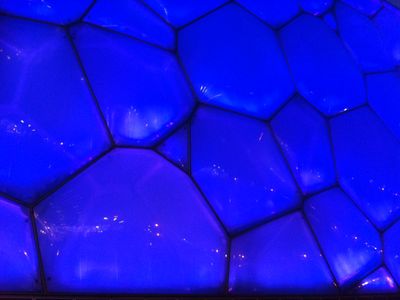Heat transfer, conduction, radition, convection. Vapour content of air and moisture content of materials. Diffusion, convection and capillary transport of moisture. The effect on building material and constructions. Applications on thermal insulation, air tightness, moisture safety and durability as well as on the internal and external environment.
AF1402 Building Physics 7.5 credits

The course deals with the transport of heat and moisture in buildings and building components. After having completed the course the student will be able to solve problems of Building Physics that may be encountered in the design and production of buildings.
Information per course offering
Information for Autumn 2025 Start 27 Oct 2025 programme students
- Course location
KTH Campus
- Duration
- 27 Oct 2025 - 12 Jan 2026
- Periods
Autumn 2025: P2 (7.5 hp)
- Pace of study
50%
- Application code
50238
- Form of study
Normal Daytime
- Language of instruction
Swedish
- Course memo
- Course memo is not published
- Number of places
Places are not limited
- Target group
- No information inserted
- Planned modular schedule
- [object Object]
- Schedule
Contact
Course syllabus as PDF
Please note: all information from the Course syllabus is available on this page in an accessible format.
Course syllabus AF1402 (Autumn 2024–)Content and learning outcomes
Course contents
Intended learning outcomes
After the course student should be able to:
- Understand basic definitions and concepts in Building Physics that are related to heat and moisture.
- Identify the physical processes relevant to the transport of heat and moisture for a problem with given preconditions.
- Mathematically describe basic processes for the transport of heat and moisture.
- Carry out calculations with given preconditions and to recognize implausible results.
- Clearly present the results to a problem.
Literature and preparations
Specific prerequisites
AF1002 Buildings and Civil Engineering Structures
SF1676 Differential Equations with Applications
At least 1,5 credits from AF1301 Building Materials, Basic Course and AE1601 Fluid Mechanics for Architecture and Built Environment
Literature
Examination and completion
Grading scale
Examination
- ÖVN1 - Exercises, 3.0 credits, grading scale: P, F
- TEN1 - Examination, 4.5 credits, grading scale: A, B, C, D, E, FX, F
Based on recommendation from KTH’s coordinator for disabilities, the examiner will decide how to adapt an examination for students with documented disability.
The examiner may apply another examination format when re-examining individual students.
If the course is discontinued, students may request to be examined during the following two academic years.
- TEN1 - Examination, 4.5 cr, grade scale: A, B, C, D, E, FX, F
- ÖVN1 - Exercises, 3.0 cr, grade scale: P, F
Written exam, TEN1 4.5 hp
Exercises and laboratory work, ÖVN1 3hp
Other requirements for final grade
Passed in TEN1 and ÖVN1
Examiner
Ethical approach
- All members of a group are responsible for the group's work.
- In any assessment, every student shall honestly disclose any help received and sources used.
- In an oral assessment, every student shall be able to present and answer questions about the entire assignment and solution.